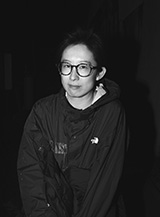Juror
Shiga Lieko

[Juror’s Statement]
I spend the hours of my day looking at all kinds of images on the many devices that have found their way into my life. I have become accustomed even to the ongoing flow of images as information inside me. If I spent the same amount of time simply looking up and staring into the sky, I would probably discover the true nature of the feeling of oppression that has been with me for as long as I can remember.
I believe that the significance of a film experience for an individual depends on how one imagines what lies outside the world depicted by the camera. This should also connect to the idea of time spent staring into the sky.
It is with this sense of urgency that I turn towards Yamagata.
To smash the expectation that says knowing the world through films is possible.
To anticipate how a film shot in life-or-death situations can transcend that cruel reality.
And to find out what we ourselves look like, basking in the Yamagata light.
Photographer. Born in Aichi Prefecture in 1980, resident of Miyagi Prefecture since 2008. Solo exhibitions include Rasen Kaigan (Sendai Mediatheque, 2012), Canary (Foam Fotografiemuseum Amsterdam, 2013), Blind Date (Marugame Inokuma Genichiro Museum of Modern Art, 2017), and Human Spring (Tokyo Photographic Art Museum, 2019). Her many group exhibitions include In the Wake (Museum of Fine Arts Boston, 2015) and New Photography 2015 (Museum of Modern Art, New York). “I was raised in a safe and clean environment that favored convenience, but discovered an affinity between myself and photographic equipment that was extremely violent,” says Shiga, who began taking pictures as a teenager when the spatiotemporal aspect of photography “offered a sense of salvation and excitement that ran deeper than death.” During the 2011 Great East Japan Earthquake, she witnessed how the workings of society broke down in the coastal region and how natural law asserted itself unforgivingly. She then watched with a sense of déjà-vu as the overwhelming process of so-called “recovery” came to recall the “recovery” of postwar Japan. These things together compelled her to turn her various activities as a photographer toward exploring the human spirit at its roots. She views what she calls the “eternal present,” space-time cut off from both the past and the future, as an important key in thinking about the qualities of photography as a medium, and has continued to create thinking photographs in attempting to render that world visible and available to the senses.*
*Adapted from Tokyo Contemporary Art Award.
